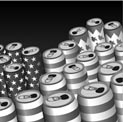Drinking outside the box
A U.S. journalist finds McGill students have a mature attitude towards booze

TZIGANE
After years of reporting on the White House for Time magazine, Barrett Seaman decided to retire and head back to school. He ended up going to a dozen universities across North America, but he never enrolled in any courses. Instead, he hung out in residences, studying the students.
His findings, which mostly revolve around alcohol, drugs and sex, are collected in a book called Binge: What Your College Student Won't Tell You (Wiley, $33.99).
"It was kinda like lying around and seeing the dark side of the moon from a different perspective," says Seaman over the phone from New York.
"I never use the word ‘shocked' in the book because I really wasn't," says Seaman. "But I was surprised at the intensity with which students drank. I drank in college and I still drink, but in the four years I was at Hamilton [College in Clinton, New York], there was only one instance where someone had to go to the hospital, and that was a big deal.
"Now it's routine. In one weekend at Hamilton, seven students were hospitalized. Harvard had 44 go in two months. That's a lot of people being taken to hospital for alcohol abuse."
But not all universities had the same problems. McGill University, the one Canadian school Seaman visited because of its high enrollment of American students, left the most positive impression on him in terms of student drinking.
"If nothing else convinced me of the counterproductive effects of American drinking laws on college life," he writes in Binge, "my experience at McGill University in Montreal did."
"The students at McGill took alcohol in stride," he says. "It was there, it was available; they didn't feel the need to drink as much as possible because they knew they could get it anywhere. I made a point of talking to the Americans there — I didn't just want to say, ‘Canadians are better at this' — and they would say how blown away they were by faculty handing them beers in the first week of school. So most would overindulge, along with the Canadians, but by the time mid-terms rolled around, they'd buckle down."
Flo Tracy, who's been McGill's director of housing for 26 years and who spoke to Seaman during his stay there, says Quebec's lower drinking age of 18, as opposed to the average of 21 in the U.S., is partly to credit for the healthier relationship her students have with alcohol.
"But," she adds, "the big thing is that we create a safe space — a community where one doesn't have to prove oneself as much."
Recently, Tracy began training the dons and floor fellows who will be living with and monitoring September's influx of new students. She brought pizza, pop and beer to about 50 people in the session.
"I had three cases of beer, and told them they could take what they wanted," she recalls. "There was a whole case left over."
Tracy says the secret to steering students away from alcoholism lies in understanding the psyche of an 18-year-old.
"Our basic management philosophy is respect," she says. "We don't have a lot of the ‘Thou shalt not' rules. Balance is important. We know these students are not angels, they're away from home for the first time and if there are rules they're going to break them.
"Those of us in the senior positions actually understand the students — we live with them, move with them and support them. They have direct access to us, and a healthy respect for us. I won't hesitate to put my foot down, but I'll have a beer with them, too." Seaman writes that McGill assumes its students are adults and treats them as such, whereas many U.S. universities, especially the Ivy League ones, will coddle students throughout their academic careers. And yet, there's a mounting disconnect between faculty and students, to the point where many schools' presidents have no idea how much drinking is actually happening. When they do act, it's often through extreme and ineffective measures.
"Huge crackdowns, abolishing fraternities, enforcing dry zones — none of that works," says Seaman, who remembers one dean who went to bed each night praying he wouldn't wake up with a dead student on his hands.
But the other reason Seaman thinks McGill, and Canadian universities on the whole, see fewer incidences of alcohol abuse is because there isn't such a prevalent all-or-nothing mentality.
"McGill students' priorities are so different from those at American schools," he says. "There are good athletic teams at McGill, but it's not such a big deal. Intramural sports are a huge thing, but it's the reverse in the U.S. Football games at McGill will often only be a third full; it's not that they don't care, it's just not as important in their lives. But on a football Saturday at Wisconsin, people start drinking the day before."
"The thing is, there are smart ways of drinking and there are stupid ways of drinking," Seaman says. "If you can get more people drinking smartly, you're going to have a safer campus."
Reprinted with permission from the National Post, Tuesday, August 16, 2005.

